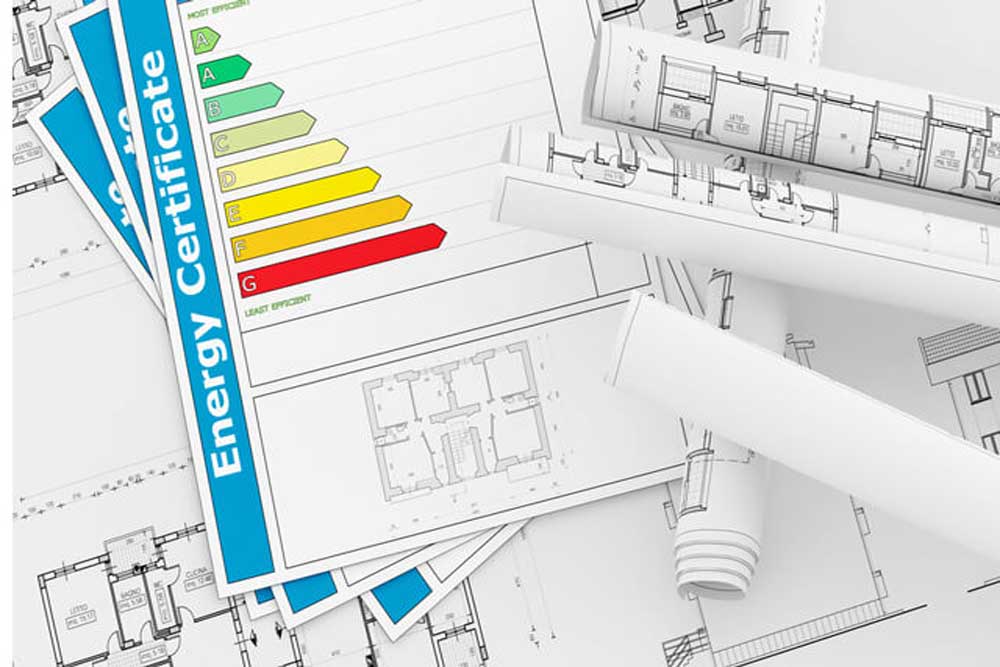Home buyers often overlook utility costs when purchasing a home, whether it’s a resale or a new home. However, this monthly bill is a budget buster especially if you live in a state like Missouri where it’s hot in the summer and cold in the winter. The one question every home buyer should ask the seller: what are your utility costs?
Energy efficient homes
When you’re buying a resale, ask the seller about energy efficient improvements. On an older home, they reduce utility costs by up to 30-percent.
On a newer home, the savings are even more significant. These improvements pay off every month!
Energy efficient improvements make a huge difference in your housing costs, but they’re not all created equal. That’s why you shouldn’t take a homeowner’s word for it. Ask to see utility bills before and after the improvements.
With new construction, ask the builder if the home is ENERGY STAR certified.
Save on utilities
Energy efficient green homes. They’re broad terms, and as a home buyer, you need to ask the right questions to make sure you’re paying for improvements that deliver.
Duct sealing, insulation, an upgraded HVAC system, upgraded windows, and air sealing are typical energy efficient improvements.
Most homeowners consider the upgrades on their own. However, to achieve the advertised energy savings each product offers, it’s important to look at how your home’s systems work together.
There’s a lot of science behind energy efficiency. So, consult an expert if you’re thinking of energy efficient improvements rather than adding more insulation, caulking windows, or upgrading your furnace on your own.
Many homeowners believe a new energy efficient furnace reduces utility bills on its own. You’ll see lower costs, but likely won’t achieve maximum efficiency if there are other problems in the home.
Your HVAC system is just one piece of the comfort equation. Reducing energy use requires a look at how all your home’s systems work together.
With an older home, the process starts with an energy audit. That tests the home’s performance revealing hidden energy leaks and finds solutions to the problem.
If you’re buying a home, ask questions about the nature of improvements, so you know you’ll achieve the advertised utility savings.
Energy efficient new construction
ENERGY STAR is the gold standard of energy efficiency. It’s not just for appliances. Homes earn the certification too.
Contractors follow strict guidelines to get a home the ENERGY STAR certification. They follow stringent building regulations and use specific products, so walls, windows, air ducts, HVAC equipment, lighting, and appliances are all energy efficient.
An efficiently engineered home offers consistent temperatures in every room and a constant supply of fresh air.
With new construction, the builder typically has proof backing up the home’s green certification. To earn an ENERGY STAR rating, the house gets inspected, tested, and verified. The independent testing ensures your home meets strict standards set by the U.S. Environmental Protection Agency’s (EPA) ENERGY STAR program.
Certified green homes also receive a HERS rating, which measures the home’s performance. The lower the score, the more efficient the home. A typical resale home has an energy efficiency score of 130, according to the U.S. Department of Energy. The standard new home scores 100.
Kevin Stallings builds energy efficient homes in Stone Canyon. As one of the Midwest’s only Energy Star 3.0 Certified Builders, his homes use nearly half as much power as other new homes.
One of his homes in Stone Canyon earns an efficiency score of 45. That means instant utility savings for homeowners. That house is more than 50-percent more efficient than its neighbors.
His 4267 square foot home in Stone Canyon, offers homeowners a whopping $2505 in utility savings each year!
Of course, ENERGY STAR certified homes cost more to buy. However, you’ll see instant savings.
[trx_quote title=”Sally Moore, New Construction Realtor®”]Is that worth your investment? Absolutely. You get that back in your monthly energy savings. Who would you rather pay, a mortgage to yourself you’re getting equity on, or your utility company? It’s an easy answer.[/trx_quote]Save money with a modern design
Energy efficient products haven’t always received a lot of praise from homeowners. Remember the light bulb controversy? Homeowners weren’t happy with the switch to Compact Fluorescent Lightbulbs (CFLs) due to environmental concerns with the trace amount of mercury in them and the color of the light.
These products have come a long way. Look at LED lights, the latest light bulb update. You get a high-quality product that lasts longer and uses less energy.
Energy efficient technology now includes modern designs. For example, the Stone Canyon home has dual purpose lights. The lights look great, and they have small blades attached to circulate the air. They look more like a light than a fan, and they’re small fitting in with the home’s sleek design.
Financing energy efficient improvements
Now that you know the value of energy efficient improvements, how do you pay for them? On a resale, consider the improvements you’ll make before you purchase the home.
Look into rebates and tax incentives that reduce the cost.
Then, talk to your lender. There are special financing options, called Energy Efficient Mortgages, that allow you to finance the cost of energy-saving measures into a single mortgage. You’re even able to exceed debt-to-income ratios so you can get a more efficient home, according to the EPA.
If you’re a veteran, there are Energy Efficient Mortgage options too. The VA caps improvements between $3,000 and $6,000.
An EEM is also available for FHA loans. There are limitations on the amount of work that you can finance.
Energy efficient benefits
If you’ve ever lived in a drafty home, you know the value of green improvements. There’s nothing worse than being too hot in the summer and too cold in the winter. Kansas City homeowners often feel that discomfort because summers are hot and winters cold!
Now that you know fixing the drafts involves more than just caulking the windows, ask about energy efficient improvements when you buy your next home. It’s better to find out about the actual costs of a home before you move in, so you can properly budget.
You’ll enjoy lower bills, improved comfort, and better air quality. We spend 90-percent of our day indoors, according to the EPA, and indoor air quality is usually worse than outside. An airtight home keeps common allergens, pollutants, and contaminants from circulating through our house.
Energy efficient upgrades are always a good idea but offer real health benefits for allergy and asthma sufferers.
Quality, comfort, and utility savings are all possible in an energy efficient home. With nearly 1.6 million Americans living in an Energy Star Certified home, it’s possible to find a resale home that’s green and possible to customize one with new construction.





 3751 NE Ralph Powell Road
3751 NE Ralph Powell Road 

